 All Hero MotoCorp Bikes And Scooter Showcased On Auto Expo Day 1
All Hero MotoCorp Bikes And Scooter Showcased On Auto Expo Day 1
 In Pics: Mahindra XEV 7e Leaked Again With Its Production-spec Design
In Pics: Mahindra XEV 7e Leaked Again With Its Production-spec Design

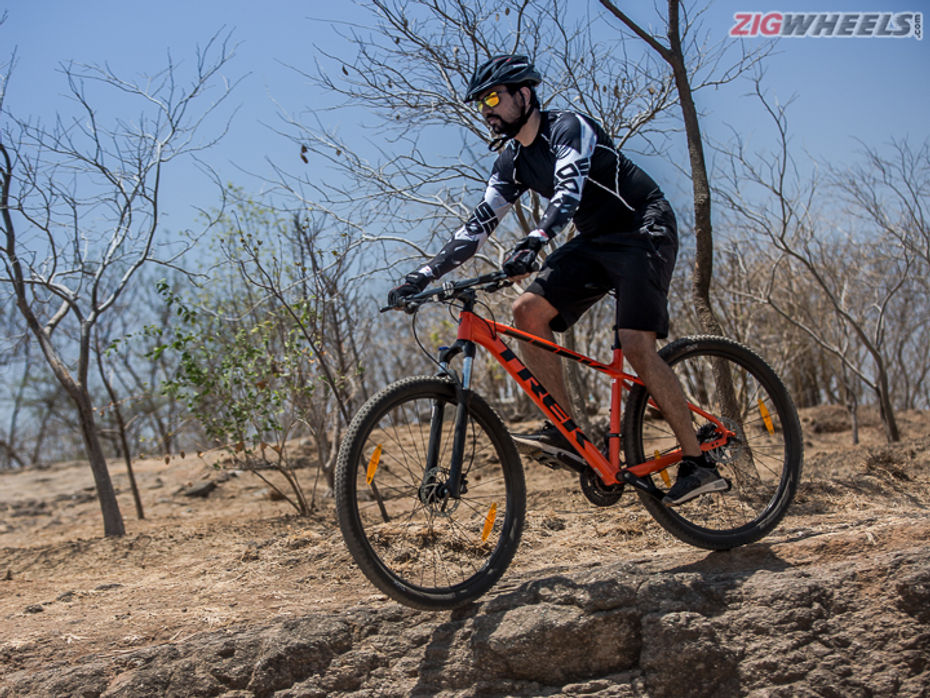
Trek Bicycles, the US-based cycle manufacturer, entered the Indian market in 2018 with an extensive product portfolio that caters to both professional as well as recreational cyclists. The collection includes around 30-odd bikes spread across different genres, and we were lucky enough to sample two of them.
The bikes in question come from the brand’s mountain bike range - the Marlin 4 and the Marlin 7. Priced at Rs 34,199, the Marlin 4 is the more affordable, beginner-friendly option, while the latter, priced a smidge over Rs 52,000, is more of a mid-spec mountain bike. Admittedly, neither of these Marlins are hardcore mountain bikes with a sophisticated suspension setup; instead, they’re hardtails meant for smoother trails. We’ve already had a go at the Marlin 4, but the Marlin 7, which is the top-spec bike in the Marlin range, gets superior mechanical components compared to the Marlin 4. In other words, it features a better suspension and braking setup along with premium gear shifters and drivetrain. So the question is, is it really worth the upgrade?
So just how different is it?

Let’s get the basics out of the way. The entire Marlin family features the same ‘Alpha Silver’ aluminium frame, which is fairly lightweight yet solid. It’s when you look further down the spec sheet that you notice the “fancier” set of underpinnings. For starters, the Marlin 7 gets its front suspension from RockShox with adjustments for preload and lockout. Essentially, the lockout lever eliminates the travel on the front suspension, which minimises energy loss when riding on paved surfaces or ascending on smooth dirt surfaces. The Marlin 4, in comparison, comes equipped with lower spec SR Suntour springs that get preload adjustments but misses out on the lockout feature.
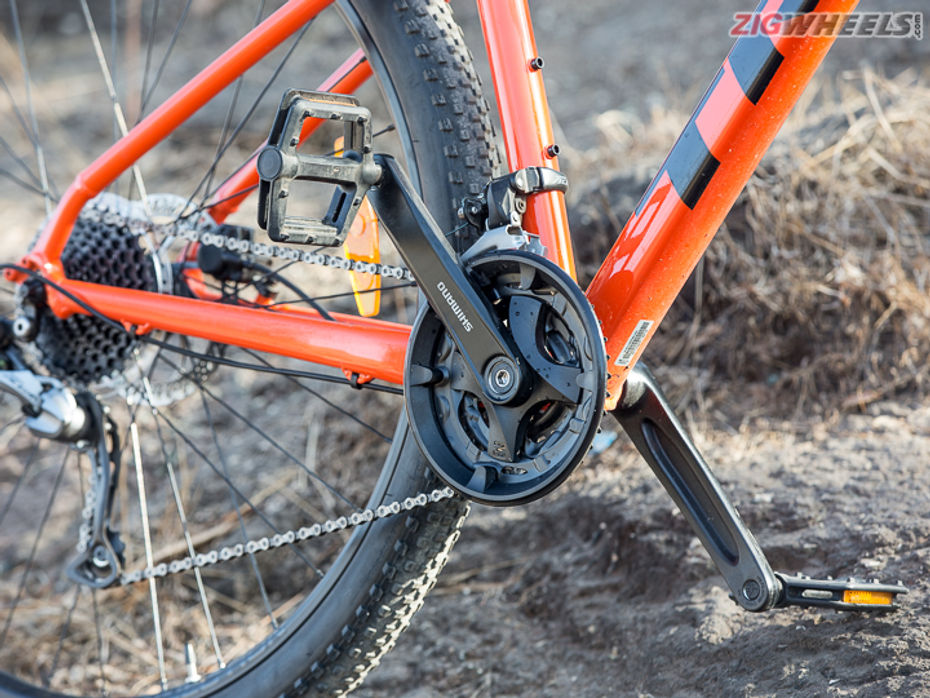
Next up is the gear setup which is slightly premium compared to the base model. To put things into perspective, the Marlin 7 comes equipped with a Shimano Altus 27-speed drivetrain as opposed to the 21-speed Shimano Tourney gear system on the Marlin 4. It’s a similar case with the braking setup, where the Marlin 7 features hydraulically actuated disc brakes instead of the mechanical units on the Marlin 4.
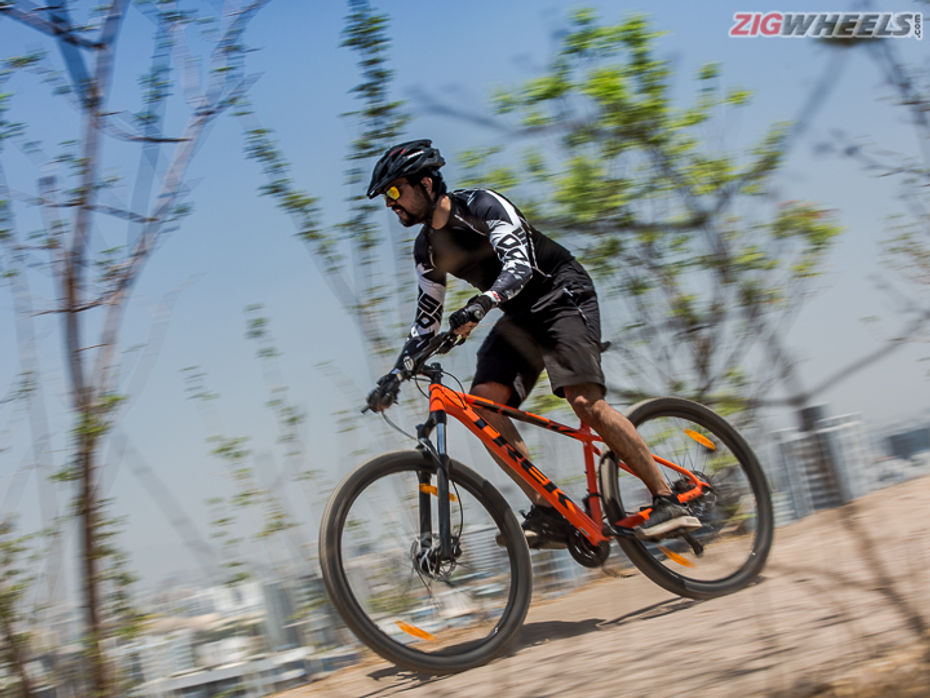
The aforementioned mechanical components also contribute to the overall weight of the bike. Simply put, the added weight of the extra sprockets, hydraulic brake systems and the slightly better suspension setup translates to the weight gain of 400 grams over the Marlin 4 which tips the scale at 14.10kg (kerb).
What about adjustability and ease of use?
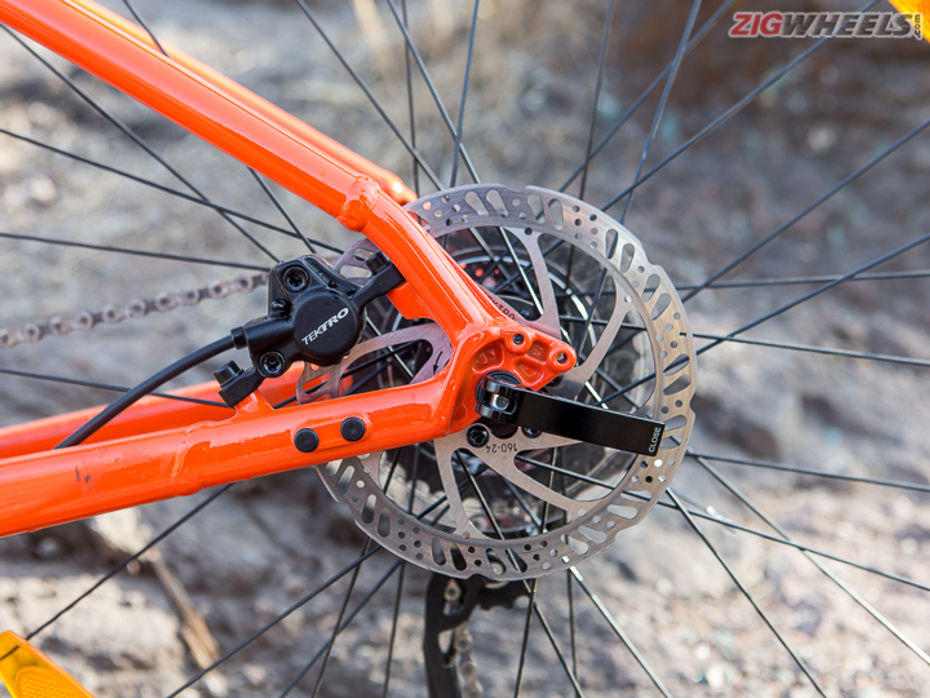
Trek provides quick release levers for the wheels and the seat on the Marlin 7 which makes life much simpler. Thanks to this, the bike can be disassembled within minutes. It’s just as simple putting it all back together.
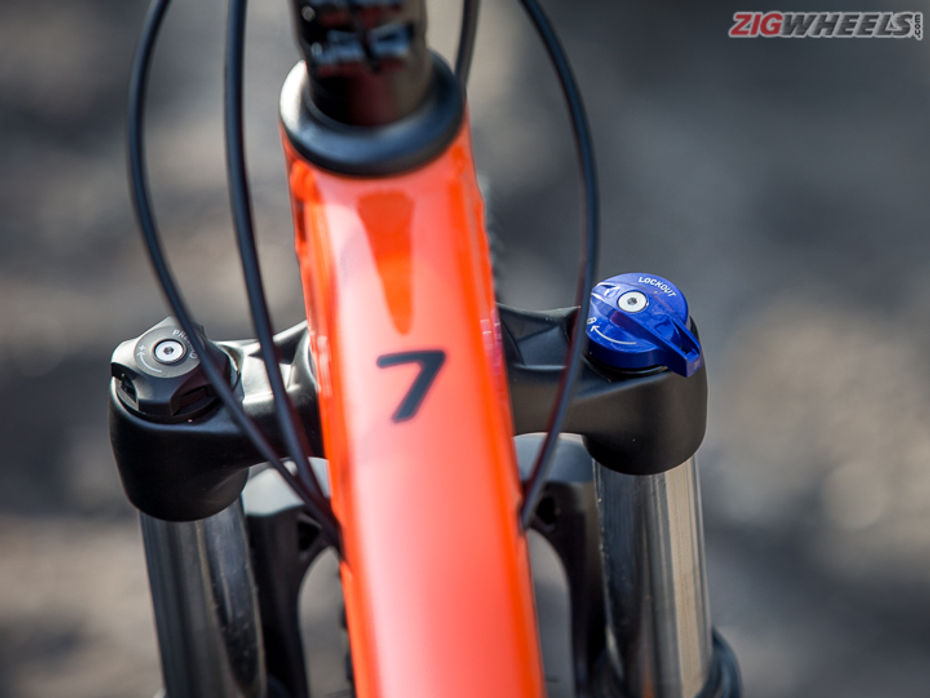
The RockShox suspension gets a preload adjustment knob on the left and a lockout lever on the right. In essence, the preload function enables you to control the amount of sag on the suspension. Based on the terrain, you could either dial up the preload to reduce the sag or dial it down to increase the sponginess. The second dial on the right-hand side of the fork enables you lock the suspension for road use. Notably, the knobs on the fork are of better quality compared to the Marlin 4, and hence, easier to work with. Also, in contrast to the Marlin 4, a couple of extra clicks gives you better control over the tension on the spring.
How’s it to ride?
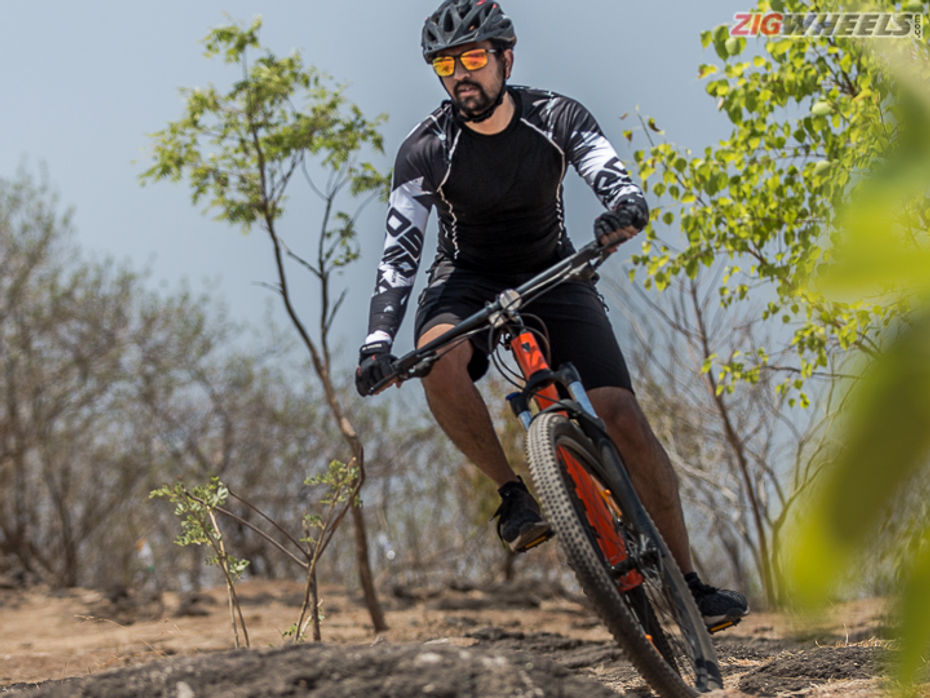
To start off, the seat is fairly narrow and rock hard, which tends to poke into your hindquarters even during short sprints. Then again this seat is of little to no use when you’re out in the trails. Also, you could opt for a gel-padded seat cover, which should make the seat more comfortable.
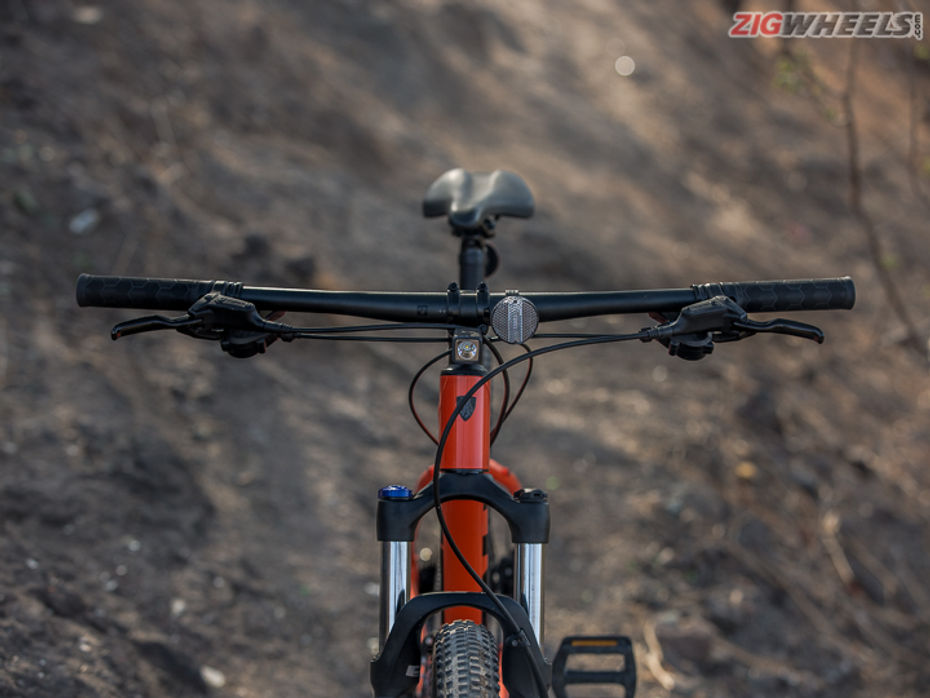
Out on the road, I wasn’t particularly fond of the lower-set 720mm wide flat handlebar which makes you reach out to them, innately making for sportier riding posture. The constant lean towards the handlebars is likely to take a toll on your back. That said, the suspension setup helps you glides over bumps, while the lockout feature reduces effort while cycling. The Marlin 7 also feels pretty nimble so zipping through traffic is a piece of cake. However, the use of fatter knobby tires means there’s more rolling resistance on road compared to slimmer hybrid tyres. So, you end up putting in a little more effort at the pedals.
Off-road abuse?
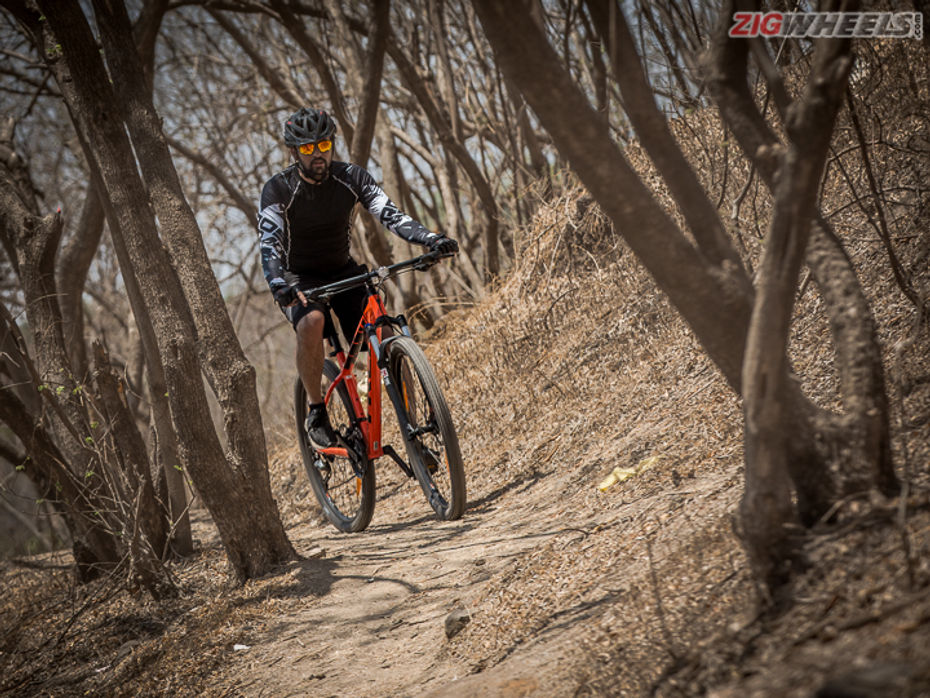
We hit the nearest trails in Pashan to see what the bike was made of, and naturally, this is where the Marlin 7 really comes into its own! Its 27-speed drivetrain gives you a good amount of spread between gears. Essentially, you could choose between a range of shorter gears for varied inclines or taller gears for descents. Besides this, the Shimano Altus gear system works pretty well and offers slick gear changes with every shift.

However, I’d like to point out that the left-hand side shifter which controls the three cogs up front has too much travel. You’d need an abnormally large thumb to shift all the way to the third cog.

Prior to hitting the trails, we dialled down the suspension to a softer setting, which helped the bike soak in undulations with ease. The RockShox units up front inspire confidence while pushing hard while the wide handlebars give you enough leverage to make quick direction changes. The bike felt pretty stable over jumps too. Supplementing its handling prowess is its lightweight frame which feels solid despite taking a beating. Having said that, it would have been nice to have some rebound control to control how fast the stanchion returns to full height post compression.
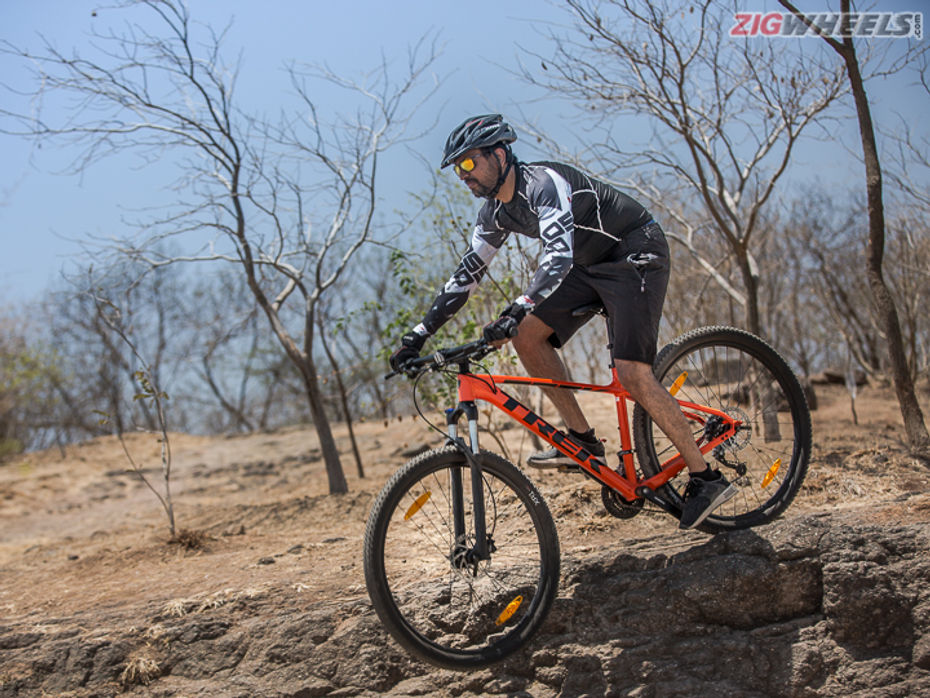
Heading down a steep descend couldn’t feel any more assuring thanks to the Marlin 7’s hydraulic brakes. The Tektro setup anchors the bike on a dime even when it’s covered in grime and offers good bite and decent progression. To add to this, there was no hint of brake fade.
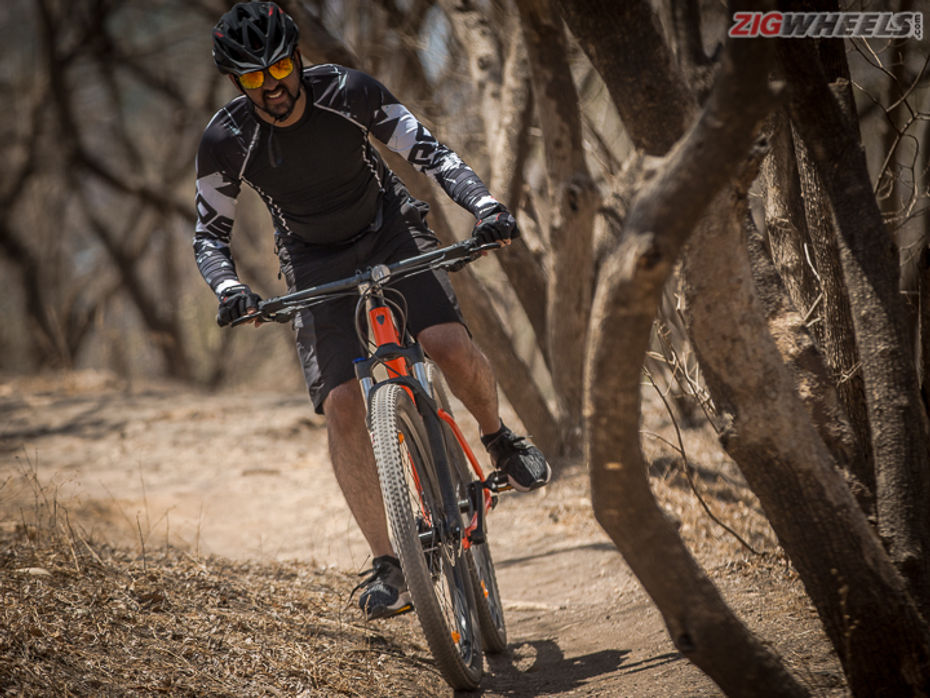
Since I was standing up on the pedals and riding I almost forgot about that pesky little seat. But that’s how mountain bikes are meant to be ridden, right? No wonder Trek never bothered to cushion the seat. While the bike worked great through the trails, what worked against it were the Bontrager tyres. They grip decently well on paved roads, not so much on loose surfaces. To elaborate, I kept losing traction on the rear wheel while climbing up a slope, which forced me to get off the cycle and push it along. Not what you’d ideally expect from a mountain bike.
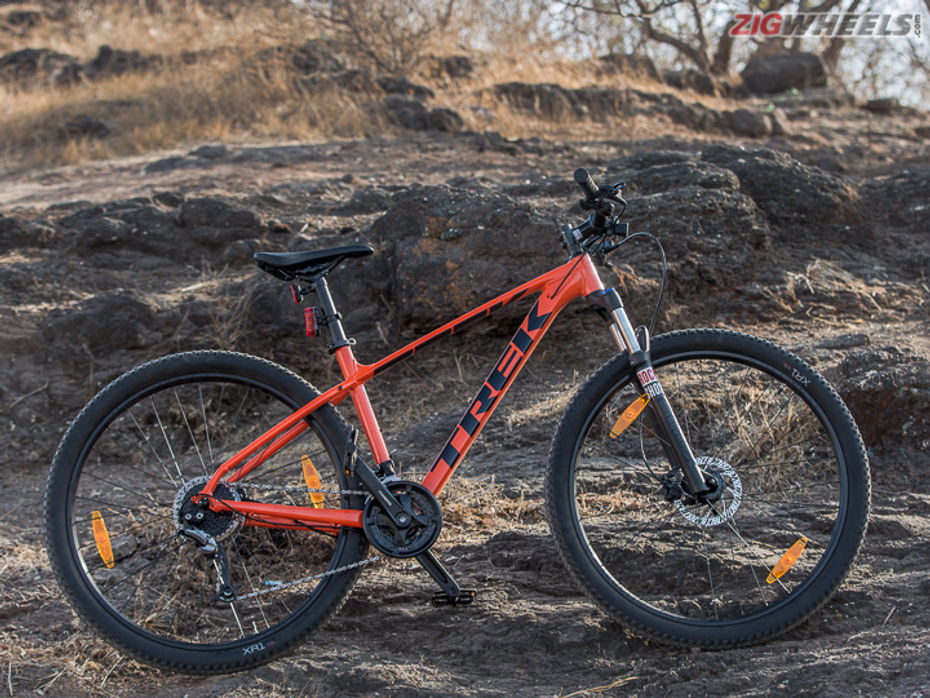
Interestingly, the bike uses two different tyre (Bontrager) dimensions - a wider 2.20” up front and a slightly narrow 2.0” section at the rear. A recipe most commonly used on mountain bikes where the front wheel usually needs more traction.
Verdict:

The Marlin 7 priced at Rs 52,099 may be similar to the Marlin 4 in certain aspects, but the added kit certainly steps things up a notch. And I must admit, the bike looks bloody good in its bright orange paint scheme. It is worth the extra Rs 18,000 over the base model? It most certainly is, if you’re an intermediate level rider who spend the majority of your time hunting trails. The wide handlebar, premium suspension, brakes and gears helps the bike perform better than the Marlin 4 off the beaten path. That said, the cycle could still do with better tyres for extra grip, a well padded seat and handlebar grips for added comfort. Although, if your ride is restricted to mainly city use and occasional trails, you’re better off with the Marlin 4.
As for you hardcore enthusiasts, we’d suggest you stretch your budget and opt for the X-Caliber, which gets a lighter frame, instead.
India's largest automotive community
 2020 KTM 390 Duke BS6: First Ride Review
2020 KTM 390 Duke BS6: First Ride Review
 2020 KTM 200 Duke BS6: First Ride Review
2020 KTM 200 Duke BS6: First Ride Review
 Honda Activa 6G First Ride Review
Honda Activa 6G First Ride Review
 Suzuki Gixxer SF 250 Flex Fuel
Rs. 2.16 Lakh
Suzuki Gixxer SF 250 Flex Fuel
Rs. 2.16 Lakh
 Hero Xtreme 250R
Rs. 1.79 Lakh
Hero Xtreme 250R
Rs. 1.79 Lakh
 Hero XPulse 210
Rs. 1.75 Lakh
Hero XPulse 210
Rs. 1.75 Lakh
 Honda Activa e
Rs. 1.30 Lakh
Honda Activa e
Rs. 1.30 Lakh
 Hero Xoom 160
Rs. 1.48 Lakh
Hero Xoom 160
Rs. 1.48 Lakh